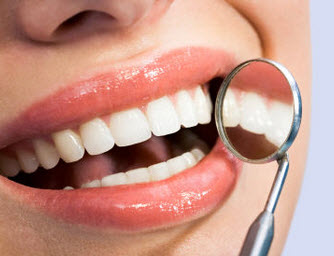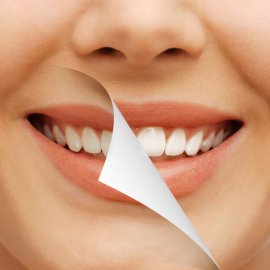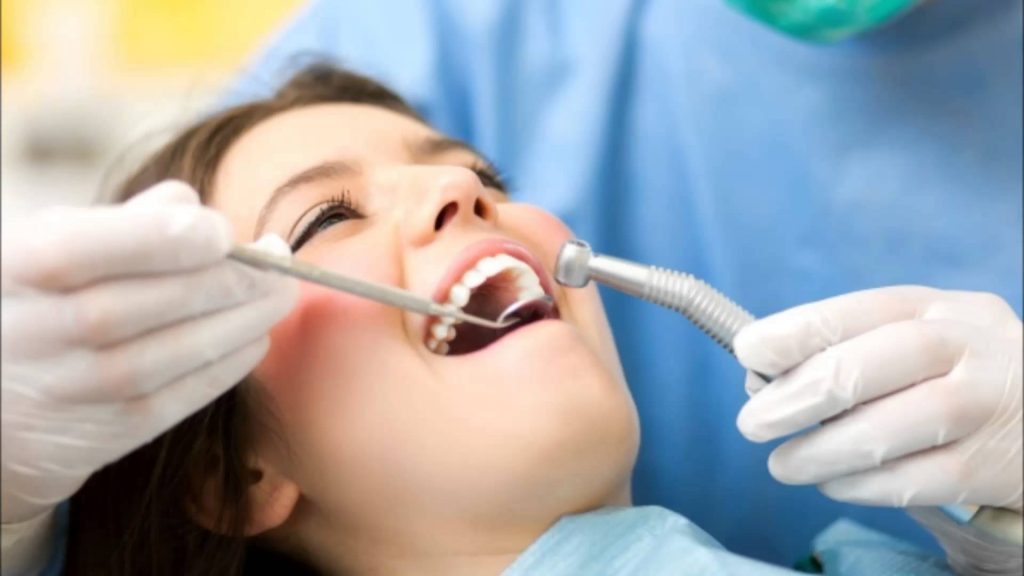J. Peter St. Clair, DMD Blog
SOME INTERESTING FACTS
August 26, 2019

Gathered from various sources:
50% consider the smile the first facial feature they notice.
80% are not happy with their smile.
Smile enhanced procedures outnumber eyelid surgeries 5 to 1.
32% of Americans cite bad breath as the least attractive trait of their co-workers.
38.5 total days an average American spends brushing teeth over lifetime.
73% of Americans would rather go grocery shopping than floss.
60% of people don’t know that a sore jaw, when combined with chest pain, can signal a heart attack, especially in women.
Dentists recommend that a toothbrush be kept at least six (6) feet away from a toilet to avoid airborne particles resulting from the flush.
A toothpick is the object most often choked on by Americans.
Every year, kids in North America spend close to half a billion dollars on chewing gum.
The number of cavities in the average mouth is down and people are
keeping their teeth longer. People, on average, have healthier mouths than even
10 years ago.
The decline in tooth decay was greatest among kids but holds across every age
group.
Only 40% of young people age 6 to 19 have ever had a cavity in their lives. That’s down from 50% a decade ago.
Over the last ten years the proportion of people age 60 that had lost all their teeth had decreased from 33% to 25%.
Adults with post-high-school degrees had an average of three more teeth than those without a high school diploma.
Smokers remain three times more likely than non-smokers to lose all their
teeth. This figure has not changed from a decade ago.
Socio-economic status plays a definite role in one’s general and dental health.
33% of low-income adults have untreated decay. This compared with 16% of middle- and higher-income adults. 19% of kids living in poverty have untreated decay compared with 8% of higher-income kids.
More people use blue toothbrushes than red ones.
Like fingerprints, everyone’s tongue print is different
The average woman smiles about 62 times a day! A man? Only 8!
Kids laugh around 400 times a day. Grown-ups just 15.
Smilers in school yearbooks are more likely to have successful careers and marriages than their poker-faced peers.
NEW INFO FOR CARDIAC PATIENTS
August 19, 2019

It is common sense that infected teeth, whether they hurt or not, or are broken down beyond repair, should be removed. We also all know by now that there are mouth-body connections and that the mouth is the “gateway” to the rest of the body. There is no disputing that a healthy mouth is better for you on many levels. However, in a recently released study, the guidelines for treatment of some types of dental problems prior to specific surgery need closer consideration.
According to a study in an issue of The Annals of Thoracic Surgery, removing an infected tooth prior to cardiac surgery may increase the risk of major adverse outcomes, including risk of death prior to surgery. This is a very specific study for a very specific group of patients. It does suggest considering postponing dental problems prior to any surgery.
Dental extraction of abscessed or infected teeth is often performed to decrease the risk of infection during surgery and endocarditis (an inflammation of the inner layer of the heart) following surgery. In this particular study, physician researchers evaluated the occurrence of major adverse outcomes in 205 patients who underwent at least one dental extraction prior to planned cardiac surgery. The median time from dental extraction to cardiac surgery was 7 days (average 35 days).
One of the researchers explained, “Guidelines from the American College of Cardiology and American Heart Association label dental extraction as a minor procedure, with the risk of death or non-fatal heart attack estimated to be less than 1%. Our results, however, documented a higher rate of major adverse outcomes, suggesting physicians should evaluate individualized risk of anesthesia and surgery in this patient population.”
In this study, patients who underwent dental extraction prior to cardiac surgery experienced an 8% incidence of major adverse outcomes, including new heart attack, stroke, kidney failure and death. Overall, 3% of patients died after dental extraction and before the planned cardiac surgery could be performed. Another of the researchers went on to say, “With the information from our study we cannot make a definitive recommendation for or against dental extraction prior to cardiac surgery. We recommend an individualized analysis of the expected benefit of dental extraction prior to surgery weighed against the risk of morbidity and mortality as observed in our study.”
This study, as in many “new” studies, awakens us to consider a departure from current lines of thinking about specific situations. This paradigm shift of thinking has also been noted in the use of prophylactic antibiotics prior to dental procedures in those with cardiac conditions.
Prophylactic antibiotics have routinely been prescribed for patients undergoing dental work who also had existing heart problems because it had been accepted that there is a link between dental bacteremia and endocarditis. Individuals with pre-existing heart problems tend to have a higher incidence of endocarditis. The American Heart Association and others have withdrawn support for this practice of prophylactic antibiotics because the danger from overuse of antibiotics outweighs any other potential risks. Regular tooth brushing, flossing, and even chewing gum are now recognized to dislodge as much, if not more, bacteremia than most dental procedures.
Prevention of dental problems is the best line of defense. Regular professional maintenance, especially as we age, is important to our overall health. Talk with your dentist and physician about your specific situations.
Dr. St. Clair maintains a private dental practice in Rowley and Newburyport dedicated to health-centered family dentistry. If there are certain topics you would like to see written about or questions you have please email them to him at jpstclair@stclairdmd.com. You can view all previously written columns at www.jpeterstclairdentistry.com/blog.
THE STATE OF DENTAL INSURANCE: PART 3
August 12, 2019
In the last couple of columns I discussed the state of dental insurance in 2019. If you missed them you can read them at www.thetowncommon.com or my blog. The basic gist was that the dental insurance industry has not changed significantly in 40 years.
It’s great if you get dental insurance from your employer for regular dental hygiene visits and have relatively small amounts of dental work to do. However, there are only a few reasons to purchase dental insurance on your own, even if you need a significant amount of dentistry. In this column, I will discuss the best strategies to get the dental care you need.
One thing is certain; most dental problems do not go away, and almost always get worse over time. Although pain is a good indicator that there is a problem, pain is also not a good indicator that there is not a problem. Many, if not most, dental problems do not cause pain. Cavities, gum disease, wear or erosion of the teeth, often do not cause pain until there is a significant problem, which then requires extensive and expensive treatment to solve. Therefore, the first and most important strategy is regular dental visits.
All too often I see people who have not been seeing a dentist on a regular basis and then have a problem that brings them to the dental office. The most reported reasons for having not been to a dentist are lack of insurance or lack of concern because “everything has felt fine up until now”.
As in most things in life, we have to make choices about what to do with our time and our money. Dentistry is no different. It is a mindset and a budgeting issue. If you value your health and overall self-care, regular maintenance visits to your dentist are the best thing you can do for yourself. If you have any type of dental insurance, at least you have some coverage for this. If you do not have dental insurance, budgeting the average $30 per month it costs over a year to have your teeth cleaned, x-rayed and examined is a smart move, and doable for most.
After you have made the decision to budget for maintenance, regardless of how much other dentistry you need, or think you need, the second key is to be in a dental office that you are comfortable with. It is vital for there to be a mutual level of trust and respect. It is imperative for the dental office to understand you, the patient; where you are in your life, and how to get the most important thing out of your decision to seek care – to keep your teeth healthy for your lifetime.
There is no disputing that dentistry costs money, regardless of whether you have any coverage or not. Dental insurance is not intended to cover 100% of dental needs. There are so many options out there for people who require more extensive care. However, the key is – what is suitable for you? Patients need to be guided into care and not sold a commodity. There are many reasons that individuals choose a specific provider, but the most important factor is if you feel good about where you are.
When you go to buy a house, does the real estate agent show everyone the same house? No. They show them what fits into their life at that particular time. Dentistry should be approached the same way. It may not be the right time in your life to have the four bedroom house and the three car garage. But, having a good solid roof over your head that is comfortable is important to everyone. This is regular dental maintenance. You can always upgrade.
Dr. St. Clair maintains a private dental practice in Rowley and Newburyport dedicated to health-centered family dentistry. If there are certain topics you would like to see written about or questions you have please email them to him at jpstclair@stclairdmd.com. You can view all previously written columns at www.jpeterstclairdentistry.com/blog.
THE STATE OF DENTAL INSURANCE: PART 2
August 6, 2019

Last week I explained how dental insurance works in general, and why there is no “good” dental insurance. This week I will break down the general differences between dental insurances, offer some things to consider when using your dental insurance, and when it makes sense to consider purchasing insurance if you don’t have it.
We get asked just about daily by patients who are either self-employed or are not offered insurance through their employer, “Should I consider getting dental insurance?” In most cases, it does not make sense to purchase dental insurance on your own. This goes back to last week’s column as to how dental “insurance” is set up to begin with.
As I discussed last week, all dental insurance companies set a limit as to how much they will “pay-out” on an annual basis. The industry average is $1000 per year, which has not changed since the inception of dental insurance back in the 1970’s. The premiums for individual dental insurance run around the $700 range. This leaves the patient with a net gain of $300 from the insurance company. This especially does not make sense if you typically only have your teeth cleaned a couple of times a year. The only way purchasing your own insurance may make sense is if you are looking to cover your entire family. You should discuss these factors with your dental office prior to making the decision. Key: You should be the one to make the decision who you pick as a dental office, not an insurance company…..that company may change next year.
In dentistry, there are a few types of dental insurance available. There are “open” insurance plans, where patients can go to whoever they want and a certain percentage of the fee will be covered depending on the procedure. The other types of insurance are PPO’s, HMO’s and discount plans or “clubs”. With these types of insurance, the dentist has to sign a contract with the insurance company and abide by a pre-set limit they can charge for all procedures. While this may sound good from a patient perspective, there are other things to consider.
Many private dental offices are being bought-up by larger corporations across the country. In general, the business model of these practices is to see a higher volume of patients. There will be less and less privately-owned dental practices as time goes on. However, in our area right now, most dental offices are small businesses. The decision for the dentist to sign-up for a particular plan depends on many factors.
As a consumer, and patient, you have to be the one to decide what is important to you. Keep in mind that dentistry is not a commodity. Dentistry should be relationship based. Approaching it this way will give you the best opportunity to get the level of care that is right for you.
Please keep in mind: Insurance does not equal health. Health requires investment and personal responsibility. Better access to care across the general population is a topic for another time. Right now, you have full control in managing your dental health care. You should talk to your dental office about any concerns you have.
Next week I will discuss the costs of dental care for those with or without dental insurance and ways to get what you want with regards to your dental health.
Dr. St. Clair maintains a private dental practice in Rowley and Newburyport dedicated to health-centered family dentistry. If there are certain topics you would like to see written about or questions you have please email them to him at jpstclair@stclairdmd.com. You can view all previously written columns at www.jpeterstclairdentistry.com/blog.
5 Surprising Health Foods That Can Wreak Havoc On Your Children’s Teeth
August 4, 2019

When you think of “healthy” foods, do you only consider them that because they’re low in fat or simply marketed that way? You’ll be surprised to know that some of the foods you consider good for your body and overall health and wreak total havoc on your mouth, according to a children’s dentist. As a parent, packing your child’s lunch is a big task to take on because you want to promote making nutritional choices in the future. Before you go out to buy snacks and drinks to make the first week of school lunches, you should know these five surprising health foods you’ll want to avoid.
(more…)Dentist Explains the Different Stages of Gum Disease
July 26, 2019

Most people have experienced bleeding gums at some point while brushing, but did you know that the infection responsible is also the leading cause of adult tooth loss? Despite being a widespread condition, most people aren’t properly educated on the various stages of gum disease. To best protect yourself from this condition, you need to know the causes and health risks of each stage. In this post, your dentist will differentiate between gingivitis and periodontitis to help you stay healthy and happy.
(more…)COMMON ADULT QUESTIONS – PART 4/4
July 15, 2019

This is the final column of this series. If you missed any of the past segments, you can find them at www.thetowncommon.com.
I’ve heard of some new cosmetic techniques that can improve smiles. Are they appropriate for older adults?
Older adults can benefit from many of the options available today for improving the look of a smile. Your dentist can describe and discuss with you the range of treatments that would be right for you. Part of older adulthood is the acceptance of aging and the development of realistic expectations for appearance. In that context, dental treatment for older adults can be a healthy and adaptive way of maintaining dental health and emotional well-being.
Our teeth and mouth play a critical role in psychological development and well-being throughout our lives. Modern dentistry has expanded esthetic options for people of all ages. Coupled with good oral hygiene and regular dental visits, cosmetic techniques can help improve the appearance of your smile.
I’m on a limited, fixed income and can’t really afford regular dental treatment. Are there any resources available to help me?
Even if you cannot pay for dental care, you don’t need to live without it. Thousands of dentists across the country assist the elderly on fixed incomes by offering their services at reduced fees through dental society-sponsored assistance programs. The availability of such aid varies from one community to another, so call your local dental society for information about where you can find the nearest assistance programs and low-cost dental care locations, such as public health and dental school clinics. Other sources of such information are local social service organizations.
What is dentistry doing to better serve older adults?
Dentists are experiencing a quiet revolution in their offices as the number of older patients increases steadily. The profession knows that this burgeoning population group is wearing fewer dentures and is keeping natural teeth longer. Also, we know that some patients in this group require special consideration because reduced mobility and dexterity may make daily oral hygiene difficult. In addition, medical conditions and impairment are factors that dentists take into account for certain patients.
Sometimes, lack of awareness about available treatments and techniques leads older patients to make false assumptions about their dental health and tolerate conditions such as toothaches, bleeding gums and clicking dentures. Dentists are gaining practical information on how to effectively manage the treatment needs of older patients. Many dental societies have set up access programs to assist older adults, individuals with physical or mental disabilities or indigent persons to receive care.
The dental profession is increasingly sensitive to the special needs of and the importance of dental health in the older patient. Older adults are more health conscious as a group than ever before. Their oral health is an important part of their overall health and the dental profession is committed to providing the treatment and guidance older adults need to maintain it.
Dr. St. Clair maintains a private dental practice in Rowley and Newburyport dedicated to health-centered family dentistry. If there are certain topics you would like to see written about or questions you have please email them to him at jpstclair@stclairdmd.com. You can view all previously written columns at www.jpeterstclairdentistry.com/blog.
COMMON ADULT QUESTIONS – PART 3/4
July 8, 2019

I find that some foods have become difficult to chew and swallow. Do I really need to eat the same amount or variety of food that I did when I was younger?
Maintaining proper nutrition is important for everyone, young or old. Many older adults do not eat balanced diets and avoid meats, raw vegetables and fresh fruits because they have trouble chewing or swallowing. These problems can be caused by painful teeth, ill-fitting dentures, dry mouth or changes in facial muscles. Others find their sense of taste has changed, sometimes due to a disease or certain medications.
Because of these and other factors, the diets of older adults are often lacking in calcium, protein and other nutrients essential to dental and overall health. You need a balanced diet.
If you are unable to eat certain things that you enjoy and contribute to a well-balanced diet, address the reason this is a problem. Consult your physician, nutritionist and dentist about the possible use of supplements to make up for the parts of your diet that are lacking.
Why do my teeth seem darker?
One of the changes you may notice as you grow older is that it’s harder to keep your teeth clean and white. This is because the sticky, colorless layer of bacteria, called plaque, can build up faster and in greater amounts as we age. Changes in dentin, the bone-like tissue that is under your enamel, may also cause your teeth to appear slightly darker.
Regular professional dental hygiene visits are vital to maintaining and monitoring your oral health. For most, professional teeth bleaching is a cost-effective way to brighten your smile.
Why does my mouth feel dry?
Reduced saliva flow that results in a dry mouth is a common problem among older adults. It is caused by certain medical disorders and is often a side effect of medications such as antihistamines, decongestants, pain killers and diuretics. Some of the common problems associated with dry mouth include a constant sore throat, burning sensation, problems speaking, difficulty swallowing, hoarseness or dry nasal passages. Left untreated, dry mouth can damage your teeth. Without adequate saliva to lubricate your mouth, wash away food, and neutralize the acids produced by plaque, extensive cavities can form.
Your dentist can recommend various methods to restore moisture. Sugar-free candy or gum stimulates saliva flow, and moisture can be replaced by using artificial saliva and oral rinses. Xylitol, a sugar alcohol used as a sweetener, is found in many of these products and also has the benefit of being anti-cavity.
Why am I losing my sense of taste?
You may find that you are losing your appetite due to a change in your sense of taste. Several factors can cause this change. Besides an age-related decrease in the sense of taste and smell, certain diseases, medications and dentures can contribute to a decrease in your sense of taste. You should make your physician aware of this.
I’ve heard about implants as an alternative to dentures. What should I know about implants?
Dental implants can be used in many ways and may offer solutions for patients who cannot function adequately with conventional dentures. However, not every patient is a candidate for implants. The decision can be made only after a careful examination by your dentist and discussion of the relative benefits and risks and what the procedure involves. Ask your dentist if implants may be an option for you.
Dr. St. Clair maintains a private dental practice in Rowley and Newburyport dedicated to health-centered family dentistry. If there are certain topics you would like to see written about or questions you have please email them to him at jpstclair@stclairdmd.com. You can view all previously written columns at www.jpeterstclairdentistry.com/blog.
COMMON ADULT QUESTIONS – PART 2/4
July 1, 2019

I understand that periodontal disease is a major cause of tooth loss in adults, but is there anything I can do about it?
Gum disease—periodontal disease—often progresses slowly, without pain, over a long period of time. This is one reason why it is common among older adults. The longer the disease goes undetected and uncontrolled, the more damage it causes to gums and other supporting tissues. Although periodontal disease is caused by bacteria, other factors can increase the risk or severity of the condition. These include food left between the teeth, smoking, smokeless (spit) tobacco use, badly aligned teeth, ill-fitting bridges or partial dentures, poor diets and some systemic diseases such as diabetes.
Although periodontal disease is common, it can be controlled or arrested. In its early stages, it can be reversed. Treatment of advanced cases may require surgery. Look for these warning signs and see your dentist if you notice any of them: bleeding gums when you brush; red, tender or swollen gums; gums that have pulled away from the teeth; pus between your teeth and gums when the gums are pressed; loose teeth or teeth that are moving apart; any change in your bite; any change in the fit of your partial dentures; constant bad breath or bad taste.
My dentures don’t feel as comfortable as they once did. Before I see the dentist, should I try some different products myself to try to improve them?
Your dentures were made to fit precisely. If they are cared for properly, they do not change shape. They can become loose due to natural changes in the gums and bone supporting them. As the jawbone begins to shrink, so do the gums. In addition, the teeth wear over time and become less effective during chewing. Most dentures should be replaced every 5-8 years.
When your dentures do not fit properly, see your dentist as soon as possible so adjustments can be made. Professional relining of the denture may extend its lifespan.
Do not try to change the fit of your dentures yourself. This can damage them and make them unrepairable.
If I have full dentures, do I really need to see the dentist as often as before?
Even if you no longer have your natural teeth, you should see your dentist once a year for an oral examination. The dentist will examine your mouth to check for any problem with the gum ridges, the tongue and the joints of the jaw, as well as screen for oral cancer. For a variety of reasons, many older adults are more susceptible to oral diseases, including oral cancer. About 95 percent of all cancers are found in people over age 40. However, many of these cancers are treatable if detected early. Oral tissues are also checked for signs of other diseases that can first manifest themselves in the mouth.
I am currently taking medication that my physician prescribed for me. Can this affect my dental treatment?
When your dentist asks for your medical history, be sure to provide complete, up-to-date information on your health. Inform your dentist if you have experienced recent hospitalization or surgery, or if you have recently been ill. Also tell the dentist the names, doses and frequency of any medications you are taking, whether prescription or over-the-counter products, and the name of your physician. This information will help the dentist to select the most safe and effective method of treatment for you.
….to be continued
Dr. St. Clair maintains a private dental practice in Rowley and Newburyport dedicated to health-centered family dentistry. If there are certain topics you would like to see written about or questions you have please email them to him at jpstclair@stclairdmd.com. You can view all previously written columns at www.jpeterstclairdentistry.com/blog.
COMMON ADULT QUESTIONS – PART 1/4
June 24, 2019

Isn’t tooth loss inevitable in the later years?
Today, older adults are keeping their natural teeth longer because of scientific developments and the preventive emphasis in dentistry. This improvement was seen in the results of a survey released by the National Institute of Dental and Craniofacial Research. They showed that among persons aged 55 to 64, the rate of toothlessness dropped 60 percent since 1960.
Good oral hygiene and regular dental care are important throughout your life, whatever your age. By practicing good oral hygiene at home and visiting your dentist regularly, you will prevent dental problems and save time and money as well.
There are two things that cannot be disputed when it comes to oral health:
- Quality of life is better with a healthy mouth full of teeth
- Your mouth is the gateway to the rest of your body. If you care about being healthy, you should take the steps necessary to have optimum dental health
At my age, why should I bother with oral hygiene and going to the dentist?
Thorough daily brushing and flossing of your natural teeth are essential to keep them in good condition—especially as you age. Plaque, the sticky, colorless layer of bacteria that causes tooth decay and periodontal (gum) disease, can build up quickly on the teeth of older adults, particularly when they neglect oral hygiene. This can increase your risk for tooth decay and periodontal disease.
A few simple steps can help you maintain good oral health throughout your life. Brush your teeth twice a day with a fluoride toothpaste, and clean between your teeth daily with floss or interdental cleaners. Be sure to see your dentist regularly for exams and professional teeth cleaning. Professional monitoring of your oral health status is essential.
Should adults be concerned about cavities?
Tooth decay is not just a child’s problem. Adults of all ages can have cavities. The causes for tooth decay are the same for everyone, regardless of age. Decay results when the bacteria in plaque feed on the carbohydrates (sugar and starch) in our diet to produce acids that can cause cavities.
Decay rates can change throughout our lifetime for various reasons. Adults are more likely to have decay around older fillings or other dental work. Decay of the tooth root is also common among older adults. Root caries (decay) occur when the gums recede, exposing the softer root surface, which decays more easily than tooth enamel.
Tooth decay is also promoted by dry mouth. This condition, called xerostomia, occurs when the supply of saliva is greatly reduced. It can be caused by many types of medications (such as anti-histamines, anti-hypertensives, and anti-depressants) or radiation therapy to the head or neck. Saliva is needed to lubricate the mouth, wash foods away and neutralize the acids produced by plaque.
Allowed to continue, dry mouth can lead to rampant tooth decay. If you think you have this problem, be sure to discuss it with your dentist or physician. They may recommend a saliva substitute and/or fluoride products to help prevent decay.
….to be continued
Dr. St. Clair maintains a private dental practice in Rowley and Newburyport dedicated to health-centered family dentistry. If there are certain topics you would like to see written about or questions you have please email them to him at jpstclair@stclairdmd.com. You can view all previously written columns at www.jpeterstclairdentistry.com/blog.







